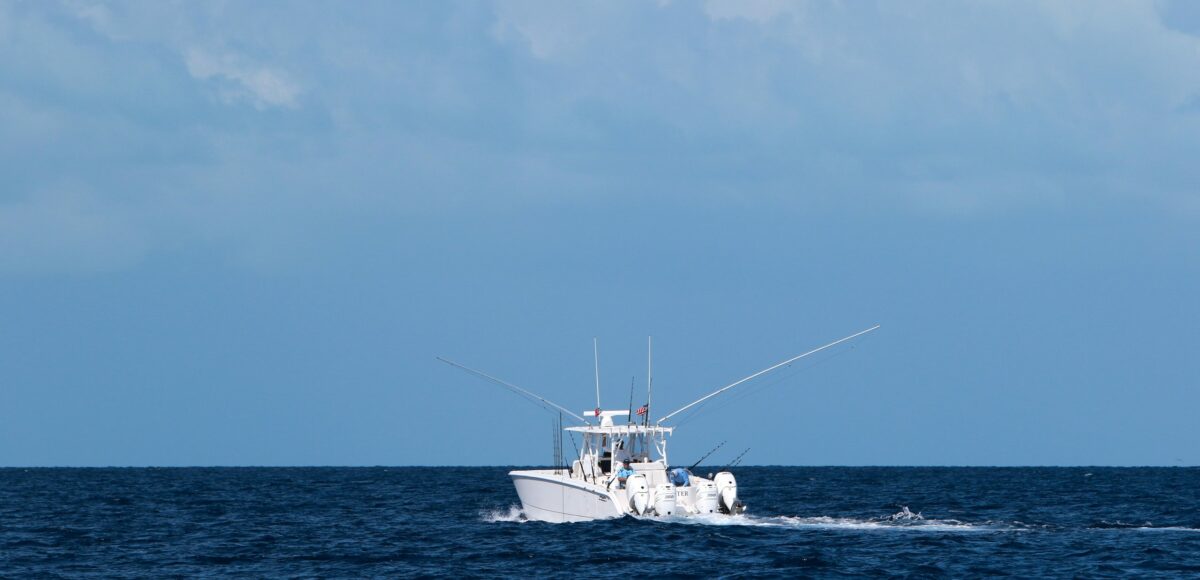With any boat design, there is a tradeoff requiring captains and owners to decide which hull shape is right for their particular operation. Getting to the bite first is growing in importance, but your boat must also raise fish. Every planing hull produces a slightly different wake in relation to its length, beam and power applied, and in an effort to clean up the trolling alleys behind their outboards, captains are experimenting with ways to manipulate the wash. Compared to a sportfish that features sharp bow entry leading to flatter sections aft, center consoles with deep v hulls have considerable deadrise aft. The Contender 39ST with twin stepped hull has a transom deadrise of 24.5 degrees, while custom convertibles in the 50- to 60-foot range might display around nine degrees of deadrise at the stern. Viking 54C has a 15-degree transom deadrise, which is considerable for a sportfish. Among the defining characteristics and limitations of different planing hull shapes, increased transom deadrise demands increased power to reach equivalent speeds. Accordingly, center consoles eclipsing 40 feet are often equipped with triple and quad outboard configurations. Four propellers turning just below the surface produces pronounced wash in comparison to the two wheels of a sportfish that are much larger in diameter and set much deeper in the water, allowing captains to troll with significantly less rpm. The wider beam and greater displacement of a sportfish also creates a more defined wave pattern behind the boat compared to narrow and lightweight center consoles. For the operators of open fisherman to make a bigger wake they must troll faster, which produces a more distinct wash. When trolling spread and speed work together the sportfish has the clear advantage of cleaner prop wash and larger, more defined wake. However, there are simple adjustments that can be made to clean the trolling alleys of outboard-powered vessels. Aboard platforms with four outboards, running just the two inside motors is a proven tactic, with some captains even trimming the inactive motors completely out of the water. With only two turning props in the water, the result is significantly less froth behind the boat. Trim tabs should be all the way up, and engine trim of the two engaged outboards should be all the way down. Triple engine boats can similarly trim their center motor out of the water. Offering wide open cockpits and cavernous storage, catamarans have continued to gain recognition among big game anglers and are like nothing weve seen before. With sponsons separated by a few feet, the wake is decidedly smaller on a cat, but the hull throws a cleaner wash than a v hull due to the weight of the boat over two narrower hulls. “The catamaran that I run a lot is a 40-foot Invincible,” says Capt. Adam Peeples of One Shot Charters. “It has quad 400 hp Mercury Verado outboards, and when we troll with that boat, I turn the two outside motors off. It actually makes a really clean wake. In comparison to my 31-foot Cape Horn, it a much narrower wake. I think that mainly because it such a beamy boat. With just the two inside props turning, even the corner flat lines are in clean water. It works out really nicely. I was concerned how it would do trolling, but it raises fish. Weve had several blue marlin bites on the short corners.” Once youve dialed down your prop wash, it time to position baits, lures and teasers within the spread in relation to your tack and prevalent sea conditions. “It really just where the lures are running right,” says Capt. Peeples. “Im usually around seven to eight knots, normally closer to seven because I like to pull some meat, too. The main difference with a catamaran is that you dont get the traditional waves behind the boat like a convertible, it just flat and clean wash. As far as positioning lures, it a little bit different. Still the same principle, just making sure the lures are running true.”














